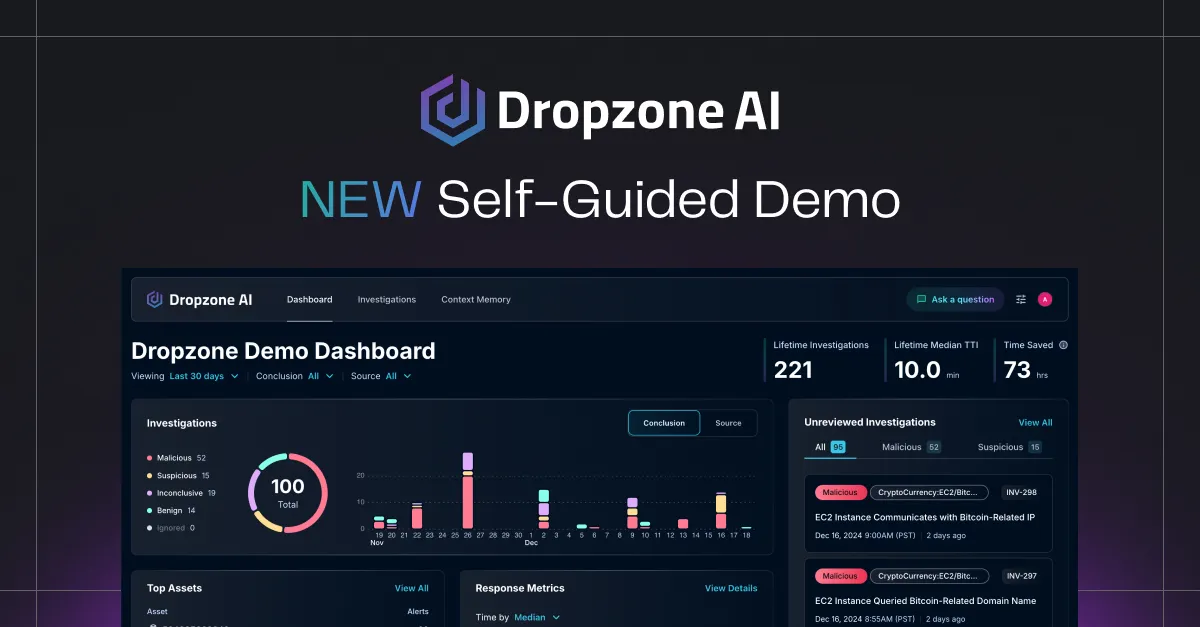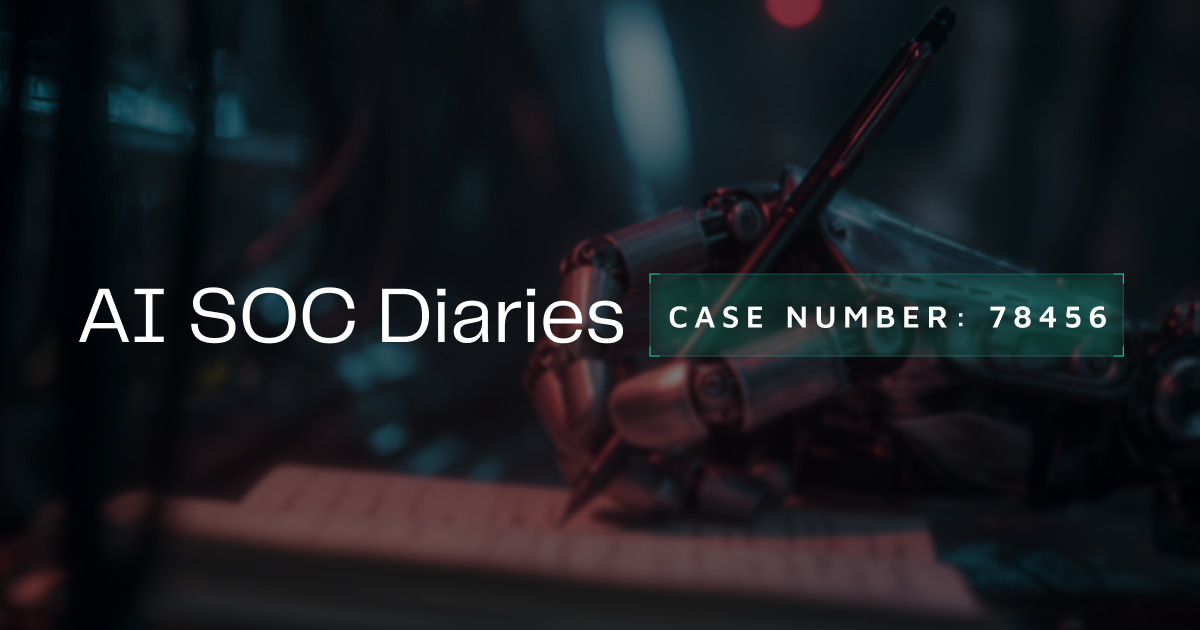The modern cybersecurity stack comprises numerous security solutions stitched together to safeguard organizations against an ever-growing threat landscape. These solutions generate hundreds to thousands of alerts daily—with enterprise environments seeing 10,000+ alerts—creating a critical operational challenge known as alert fatigue. According to the Osterman Research Report, almost 90% of SOCs are overwhelmed by backlogs and false positives, with more than 80% of analysts reporting feeling constantly behind.
While these alerts are designed to protect organizations from threats, the sheer volume can lead to a phenomenon that puts organizations at significant risk: alert fatigue. This blog post delves into the complexities of alert fatigue, its causes, consequences, and how AI-powered solutions are transforming the way SOCs handle this challenge.
Key Alert Fatigue Statistics:
• 90% of SOCs overwhelmed by backlogs (Osterman Research)
• 66% of SOC teams can't keep pace with alerts (SANS 2024)
• 70% of junior analysts leave within 3 years (SANS 2024)
• 10,000+ daily alerts in enterprise environments
What is Alert Fatigue in Cybersecurity?
Alert fatigue is the cognitive overload that occurs when SOC analysts face thousands of daily security alerts, leading to missed threats and increased risk. It refers to the process of desensitization that occurs when human security operations center (SOC) analysts are overwhelmed by a high volume of alerts. This cognitive overload develops gradually as analysts are exposed to a constant stream of alerts, many of which are false positives, low-priority issues, or alerts that lack context and yield wasted investigative effort.
With enterprise environments generating 10,000+ alerts daily and 66% of SOCs unable to keep pace, organizations need automated solutions to maintain security effectiveness. The early symptoms of alert fatigue include lengthening response times and an increased likelihood of missing critical alerts. More serious long-term symptoms include a significant percentage of alerts not being triaged at all.
The Operational Impact of Alert Fatigue
Alert fatigue directly impacts your SOC's performance metrics and Mean Time to Conclusion (MTTC). When analysts handle hundreds of alerts per shift, their decision-making suffers. The operational challenges compound as alert volumes continue to grow while security teams struggle to keep pace.
The real-world impact on your SOC includes:
- Rushed decisions leading to missed threats: When an analyst has 200 alerts in their queue, they spend 30 seconds on what should be a 5-minute investigation
- Context switching costs: Constantly moving between different types of alerts reduces efficiency and increases the likelihood of errors
- Pattern blindness: After seeing 500 false positives from the same misconfigured rule, analysts start ignoring that alert type entirely—even when it's legitimate
- Compound effect: Untriaged alerts from Monday become Tuesday's backlog, creating an ever-growing mountain of uninvestigated alerts
What Causes Alert Fatigue?
Several factors contribute to the development of alert fatigue:
- High alert volumes: As solution adoption grows to address threats, so do the alerts
- High false positives: Poorly configured solutions fire irrelevant alerts
- Poor quality alerts: Alerts that lack context require extensive manual investigation
- Overstretched security teams: Security teams are doing more with less, with a growing imbalance of the alert-to-analyst work ratio
- High analyst turnover: According to the SANS 2024 SOC Survey, 70% of SOC analysts with five years experience or less leave their role within three years
The Consequences and Risks
The immediate risk of alert fatigue is that SOC analysts become desensitized to alerts. This means the likelihood of missing or ignoring critical alerts increases dramatically. This can result in breaches going undetected for extended periods, allowing attackers to dwell and cause extensive damage.
According to the SANS 2024 SOC Survey, 66% of SOC teams reported they can't keep pace with the volume of alerts they receive. When organizations cannot investigate all their alerts, they leave themselves vulnerable to attacks that could have been prevented with timely detection and response.
The long-term consequences can be severe, including the loss of sensitive data, financial losses arising from the loss of customer trust, fines levied by regulators, and irreparable reputational damage.
Burnout and Retention Crisis
The constant pressure to investigate and respond to alerts leads to SOC analyst burnout. According to the ISC2 2024 Cybersecurity Workforce Study, two-thirds of cybersecurity professionals reported higher stress levels, with excessive workload and repetitive triage work as major drivers. This burnout creates a vicious cycle: experienced analysts leave, new hires struggle with alert volume, and security posture weakens.
Organizations need to acknowledge that human-powered SOC teams are overwhelmed. By leveraging AI SOC analysts not only are response times sped up but the huge backlog of alerts is dealt with seamlessly through automating pattern recognition, alert correlation and prioritization at scale.
How to Mitigate Alert Fatigue
Mitigating alert fatigue requires a multi-faceted approach:
- Reducing alert volume: Alert tuning, consolidation of security tools, and event correlation are essential
- Improving alert quality: This involves fine-tuning detection rules, leveraging threat intelligence to enhance context, and implementing risk-based alerting
- Adopting AI SOC analysts: Modern AI SOC agents enable Tier 1 SOC automation, significantly improving alert triage capacity and reducing MTTC
By understanding its causes and implementing strategies and new technologies such as AI SOC analysts to mitigate alert fatigue, security teams can get on the front-foot of alerts in the face of an ever-growing threat landscape.
Quantifying the Impact: Traditional vs AI-Augmented SOC Performance
When organizations implement AI SOC analysts, the operational improvements are immediate and measurable. Here's what the data shows:
Sources: Dropzone AI platform metrics; SANS 2024 SOC Survey; ISC2 2024 Cybersecurity Workforce Study
Understanding MTTC: Unlike MTTR which only measures response to confirmed incidents, MTTC captures the complete alert lifecycle—including all those false positives your team investigates. It's the metric that actually reflects your SOC's daily reality and provides a more accurate picture of operational efficiency.
Dropzone AI Performance Metrics:
- 90% reduction in MTTC (from 30-40 to 3-11 minutes)
- 10X increase in alert handling capacity
- 100% alert investigation coverage
- 99.9% accuracy with zero configuration
Technical Implementation: Beyond Alert Reduction
Addressing alert fatigue requires more than simple volume reduction. Modern AI SOC analysts leverage three key technologies that mirror how your best analysts actually work:
Recursive Reasoning: Thinking Like Your Senior Analyst
Think of how your best analyst investigates a new type of alert—they don't follow a script. When they see unusual network traffic, they might check the source IP, then notice it's from a new cloud provider, which leads them to verify if marketing just launched a new service. That's recursive reasoning: each finding informs the next investigation step.
Unlike SOAR playbooks that break when encountering the unexpected, AI SOC agents investigate dynamically. For example, when Dropzone AI sees an unusual API call, it doesn't just check a blocklist—it investigates whether this API is normally called from this server, at this time, by this user, adapting its investigation path based on what it discovers.
Context Memory: Your SOC's Institutional Knowledge
Every SOC has institutional knowledge: "Those alerts from the dev servers at 2 AM? That's the nightly build process." Dropzone AI's context memory captures this same understanding. It learns that identical API calls mean different things when coming from development versus production servers.
Real example: A "privilege escalation" alert that would be critical in production might be routine in your dev environment where developers regularly test admin functions. Context memory eliminates these false positives automatically—no rule writing required.
Integration Depth: See the Full Picture
With 40+ native integrations, AI SOC analysts correlate across your entire security stack:
- SIEM platforms (Splunk, QRadar, Elastic): Pull additional logs and correlation data
- EDR solutions (CrowdStrike, SentinelOne, Microsoft Defender): Get process trees and endpoint behavior
- Identity systems (Okta, Active Directory): Verify user permissions and access patterns
- Cloud platforms (AWS, GCP, Azure): Check resource configurations and cloud-native logs
This means when investigating a suspicious login, the AI doesn't just check the authentication log—it automatically correlates with endpoint activity, recent email access, and cloud resource usage to build a complete picture.
Real-World Success: Assala Energy Case Study
Assala Energy, an oil exploration company with operations across Africa, faced the challenge of protecting their network from growing threats with a lean IT security team. Their SOC was handling thousands of daily alerts while trying to maintain robust security posture.
"We need to know quickly when there's a security issue because the risk to the business is real," says Kevin Turnbull, Global IT Director at Assala Energy. "We're always on the lookout for a smarter way to sift through noise, find the signal faster, and help our analysts—especially new hires—spend time on the alerts that matter."
Results after implementing Dropzone AI:
- 5X faster MTTR with detailed investigations explaining not just "this is a problem" but "here's why"
- 70% reduction in false positives requiring manual review
- Alert triage time cut from 25 minutes to under 5 minutes for common scenarios
- 100% alert investigation coverage with 24/7 AI augmentation
- Improved onboarding for new security analysts with consistent investigation quality
"Simply adding more people to the team is not a scalable solution; using augmented AI to enhance your team's capabilities is the way forward," Turnbull emphasizes.















